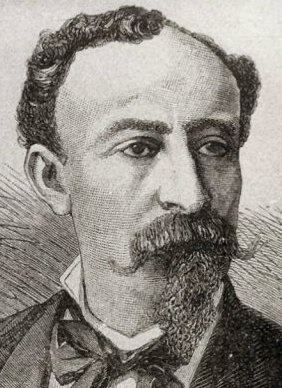Preceded by José Ferreira Pestana | Nationality Portuguese | |
 | ||
Preceded by Sebastião Lopes de Calheiros e Meneses Preceded by António Sérgio de Sousa Died 27 May 1901, Paço de Arcos, Portugal Succeeded by Joaquim José Macedo e Couto | ||
Januário Correia de Almeida (31 March 1829 – 27 May 1901) was a Portuguese colonial administrator and a diplomat. He was the first Baron of São Januário, the Viscount of São Januário and later the Count of São Januário.
Contents
Early life
Correia de Almeira was born in Oeiras to Januário Correia de Almeida (c. 1805 - 1835) and Bárbara Luísa dos Santos Pinto (c. 1800 - 1860).
Military career
He was assigned to a square, volunteered in a second battalion on 4 November 1842. He later attended the Faculty of Sciences at the University of Coimbra and was a bachelor in mathematics and philosophy, and attended a military school and graduated as a post of a tennant. He later began his military career.
Director of Public works in Cape Verde and Governor-General of Cape Verde
In his civil career, he made many importance, he was director of public works in the District of Cape Verde in 1857. Between 1858 and 1860, he repaired Fortaleza de São José da Amura in Bissau (later part of Portuguese Guinea, now part of Guinea-Bissau) In 1860, he was the 82nd governor general of the Province of Cape Verde after succeeding Sebastião Lopes de Calheiros e Meneses. As Director of Public Works, he constructed an outhouse at the Porto Praia, the city hall, quarters and streets in the island of Santiago and elsewhere on the islands of São Vicente and Fogo and other important works including a lyceum in the then provincial capital. He was succeeded by Carlos Joaquim Franco not long after in 1861, he offered to Cape Verdeans the Sword of Honour and a Portuguese Gold Medal.
As civil governor
He returned to Portugal and became Director of Public Works for the districts of Braga, and Viana do Castelo. On 15 January 1862, he was civil governor of the District of Funchal up to 20 October 1862 and later became the 25th governor of the Braga District until 26 December 1864. He was later promoted as captain on 19 March 1863. He became a royal commissioner for Vila Real District in February 1864. He became the Baron of São Januário by King Louis I unter the decree of 10 February 1866, later he was Viscount of São Januário under the decree of 9 September 1867.
Governor of Portuguese India
Between 1870 and 1875, he was the 96th colonial governor of Portuguese India. There was a military revolt during his tenure and he brought troops from Lisbon including the corvette Estefânia and the steamboat İndia and was commanded by Dom Augusto de Bragança, Duke of Coimbra and did not came into action. In Bombay (now Mumbai), he published a book titled Duas Palavras Acerca da Última Revolta do Exército da Índia (lit. Two Works on the Latest Revolt in Portuguese India).
Governor of Macau
In his career as the 60th governor alongside the 51st governor of Portuguese Timor (a subordinate of Macau), he defended the city of Macau from invasion by Chinese pirates.
Diplomat in China, Japan and Siam
In 1874, he was minister plenipotentiary to China, Japan and Siam, achieving that China had recognized the rights of Portugal on the Hainan peninsula, later he organized consular service in Japan.
Decorations
He received decorations including:
Academic life
He returned to Lisbon in 1875 and was one of the founders of the Lisbon Geographic Society and became an honorary president. He was promoted to a major on 21 January 1876.
Children
He later married Maria Clementina de Lancastre Vasconcelos e Sousa Leme Corte-Real (Porto, Sé, 21 de Setembro de 1865 - Lisboa, São João, Convento de Santos-o-Novo, 26 de Janeiro de 1939) who was daughter of Manuel Cardoso Rangel de Quadros Corte-Real (10 de Agosto de 1824 - 31 de Março de 1877) and Maria Teresa de Lancastre e Vasconcelos de Sousa Leme and had two children, Maria Teresa Correia de Almeida and Maria do Patrocínio Correia de Almeida. One of his grandchildren was D. Tomás Maria de Almeida.
Later life
He retired from politics. He died in Oeiras in 1901.
